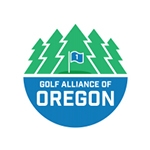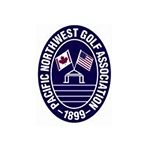Handicap Hub: Myth-Busters Round Two - Course Rating
By Kelly Neely and Gretchen Yoder, OGA Handicapping & Course Rating
Click Here for Handicap Hub Archives
Myth-Busters Round 2: Course Rating
Part 2 of our Myth Busting series highlights a few fun factoids regarding a subject matter that seems to be cloaked in complexity: USGA Course Rating. While the system contains puzzling procedures like “transition zones” and “forced vs. choice lay-ups,” we still like to say here at the OGA that “It ain’t Rocket Surgery!” Let’s mitigate some myths about how courses are rated, what the real significance of Slope Rating is, and why it’s perfectly fine for men to play the “ladies” tees.
The OGA Course Raters must just play the course and then come up with the numbers.
While the highly trained and experienced Course Rating team, comprised mainly of retired “Engin-nerds” and teachers, does golf the course, it is only after spending several hours painstakingly recording details for USGA-defined Scratch and Bogey, Male and Female golfers from every rated set of tees. Trust us, you do not want to see the amount of paper on this particular trail.
The team takes into account roll, doglegs/lay-ups, and altitude, but without considering their own golf game. As a matter of fact, Raters aren’t even allowed to participate in the rating of a course in which they are a member. As the USGA Course Rating System has specific shot lengths and other parameters that must be adhered to, the team assesses every landing zone for obstacles including topography, fairway widths, bunkers, trees, and penalty areas (water / out of bounds). Even then, the round of golf that happens is only to reinforce data derived in the rating phase (there might be a side wager but it’s only to see who nailed the lateral penalty area rating).
My course’s Slope Rating is the same as Course B, but my course is so much harder!
Save any sparring over Slope Rating for something more important like who buys drinks after the round. Slope Rating by itself has only one meaning: which chart to pull your Course Handicap from.
The most crucial thing to know and understand here is the word relative. The Slope Rating is relative to the Course Rating on the tee being played, and is the relative difficulty of that tee for the higher handicapped player. Like a lock and key, Slope Rating and Course Rating work together and fail to open doors without the other. When figuring out which tees the golfer would most enjoy playing, Course Rating, Slope Rating, Bogey Rating and overall yardage should all be considered. But when making side-by-side comparisons just looking at numbers, can you tell which tee is tougher? Nope. You can’t answer that question until you throw in: tougher for whom? Click on the article linked immediately below for full details.
The Course is playing “softer” today, so we’ll just move the tees forward.
As our Course Rating Manager, Gretchen Yoder, would respond “GAHHH!” (Otherwise translated as “Please don’t”).
Course and Slope Ratings are calculated based on mid-season conditions. Since yardage is the most important factor in Course Rating, changing the yardage in any way from the official measured length will artificially affect the rating, and therefore affect scores being posted. Which in turn, affects Handicap Indexes. See how this is suddenly getting messier than a rainstorm?
If the course is very wet and is playing softer, thus causing less than normal roll, changing the yardage of the course won’t fix the problem. The USGA has no set formula that will tell a course how far to change yardage to compensate to an equal Rating. If conditions are considerably different than mid-season, the Handicap Committee may elect to enact a Model Local Rule for Preferred Lies, or temporarily suspend posting. Moral of the story: Please go back and read the first sentence again.
But I can’t play the “Ladies” Tees!
Tees have no gender, but course ratings do! Anyone can play from any set of tees (theoretically speaking, unless you’re playing Bethpage Black, where the entire course comes with a warning label). The OGA rates all tees for Men and all but the furthest back for Women. No such thing as “Ladies Tees.”
The key is to find the set of tees the golfer will enjoy the most. The Tee It Forward movement is here to help folks feel more comfortable with moving forward to a tee where they will enjoy the game more – which leads to lower scores and more smiling on the golf course. By the way, there is no age consideration, either. Whether he’s 6 or 106, a male is considered a male (the Handicap System also never contemplates age – only skill). And any better female player should not be limited to just playing the forward tees.
So play where you really want to play from and toss out any ego (it’s taking up too much room in your golf bag, anyway).
But the Scratch player never plays from there!
This comment comes up often in explanations of forward tee ratings. Even though our USGA-defined Scratch Golfer will likely never play from the forward tees, we still need their data to find out the proper Course Handicap for the higher handicapped golfer. Another way of saying this is – Scratch is the benchmark, the standard, the reference point.
In order to calculate the Slope Rating, two points are assessed: 1) Course Rating; approximately what the Scratch player would shoot on any given day and 2) Bogey Rating; what the Bogey golfer would shoot. Forgive the old junior high algebra lesson, but think back on “Rise over Run.” If you plot those two numbers on a graph and draw a line between them, this represents a visual representation of the mathematical formula for Slope Rating. To sum up, we’re going to use the R word again and risk sounding like a broken record - Slope Rating is the relative level of difficulty of the tee for the Bogey Golfer as compared to the Course Rating (notice that we aren’t mentioning par).
We made up our own Blue/White combo, and posted to the Whites.
That’s a great way to mess up a Handicap Index! It just takes a few minutes to get a correct rating for an unrated combo. If this is a permanent addition to the course, just call us and we can calculate a proper combo tee for you. All we need is a Name for the tee (Blue/White, Tuesday Senior Tee, Squirrel, whatever) and a list of which tee is being played from which hole.
If this is a temporary or one-off combo (like a Red-White-Blue for your 4th of July event) there is a yardage adjustment provided by the USGA that will provide everything you need to get your own rating. Click here to visit Section 5-2g of the USGA Handicap System, to figure out the yardage difference from the closest set of rated tees. This will give you a combo rating you can post scores to.
Why are we being Rated? Nothing’s changed on our golf course.
Even though major modifications might not have occurred, Mother Nature has a way of adding her own subtle variations to golf courses (not to mention what creative Superintendents can do!). Green shapes morph, fairway lines adjust; rough height, green speed and more change over time. Bunkers get added and removed. And let’s not forget the impact of trees – in the Pacific Northwest, trees play a significant role in Course Rating (as anyone who has ever played Skamania can attest).
Another reason for an updated rating is that the Course Rating System itself is undergoes edits on a regular basis along the Rules of Golf and Handicap System. The revised Rules for 2019 caused a pretty major change to how we rate. Click here to read Gretchen’s article USGA Course Rating Changes with The New Rules of Golf.
The USGA requires that every course is rated at least once every 10 years, but the OGA rates on a seven year cycle. This way we can keep up with changes.
|
Questions? Contact Kelly or Gretchen in the OGA Handicapping & Course Rating Department at (503) 981-4653 x226 or Click Here to Email Your Question |








